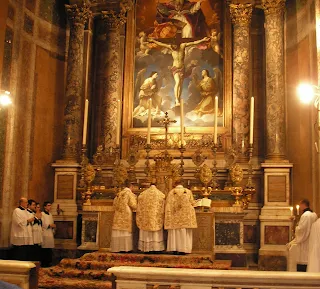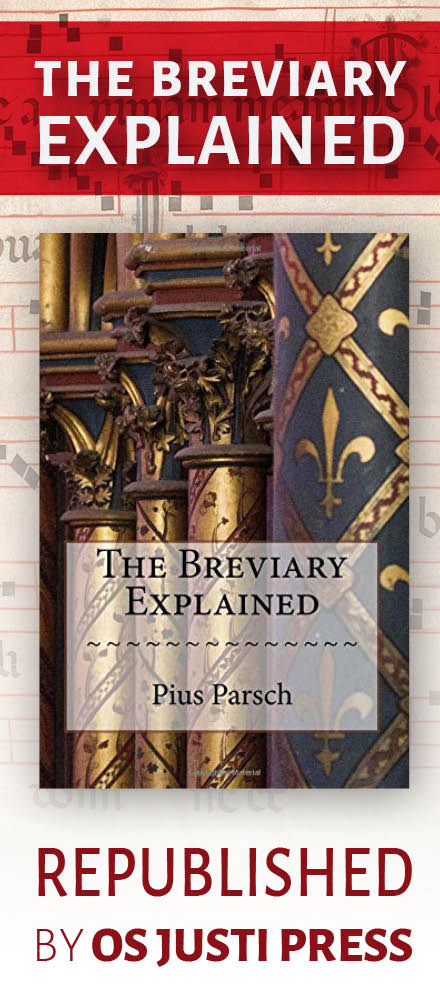Today's Corriere della Sera carries the following article (my translation and [explanations]; don't be put off by some inaccuracies or terms like preconciliar, I don't think they are meant to be disparaging):
«Ite, Missa est» - The Old Rite in Latin Returns to Ponte Sisto
Soon a Parish for the Preconciliar Missal
By Carlotta De Leo and Ester Palma
The church of Ss. Trinità dei Pellegrini [Most Holy Trinity of the Pilgrims], close to the Ponte Sisto [the Sistine Bridge, built under pope Sixtus IV, who also built the Sistine Chapel], becomes a parish exclusively dedicated to the Tridentine rite.
The celebration in Latin, the priest «versus Deum» with his back to the faithful and Gregorian chant: This is how Mass has been celebrated for hundreds of years; this, according to the rite of St. Pius V, is how it will again be celebrated on every day in the church of the Most Holy Trinity of the Pilgrims [Ss. Trinità dei Pellegrini], on the square of the same name, a stone's throw from the Ponte Sisto.
The ancient baroque church will become the first parish of Rome (and Italy) exclusively dedicated to the Tridentine rite. The faithful will be able to assist at the Latin Mass and also to receive the Sacrament the old way: Baptism, Communion, Confirmation, Matrimony and funeral.
«There is not yet an official act by Cardinal Ruini [the cardinal vicar of Rome, who effectively governs the diocese in the name of the Holy Father]»: Msgr. Ernesto Mandara, who at the Vicariate is responsible for the churches of the [city] centre, is prudent. But the document is ready yet which will give birth to the new parish, which will be entrusted to the Priestly Fraternity of St. Peter, which counts more than 200 priests all over the world to further the old rite. Barring unforeseen circumstances, the activities will begin immediately after Holy Week.
For making the news official, only the definitive agreement regarding the maintenance of the premises between the Fraternity, the Archconfraternity of the Most Holy Trinity of the Pilgrims (to whom the church is entrusted) and the Community of Sant'Egidio - the leading movement of democratic Catholicism [whatever that means] - which is using the premises at the moment. «Controversies? Not at all! Certainly our work here will continue», assures the spokesman [of the Community of Sant'Egidio], Mario Marazziti.
The church will become a «personal parish», that is without territorial jurisdiction, but linked to the faithful who identify with the old rite. A numerous group which now gathers at the small church of S. Gregorio dei Muratori, almost hidden among the small alleys behind the piazza Nicosia. Here Latin Masses are celebrated and the Sunday service, accompanied by magnificent Gregorian chant, is always filled to overflowing.
Nothing of eighty year old nostalgics, but many young people, among whom some families with children in nappies. Also many foreigners, equipped with bilingual hand missals.
The birth of the new parish is linked to the Motu Proprio «Summorum Pontificum» with which, in 2007, Benedict XVI wanted to save from oblivion, «because of its venerabel and ancient use», the Missale Romanum promulgated in 1570 by St. Pius V and revised in 1962 by John XXIII. The liturgy in Latin disappeared almost comopletely in 1970, substituted by that in the vernacular, promoted, but not imposed, by the II Vatican Council.






















